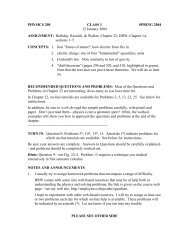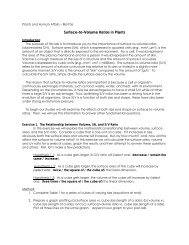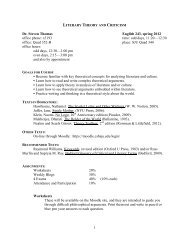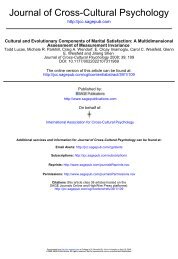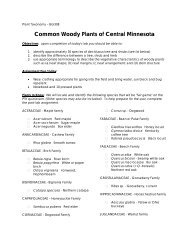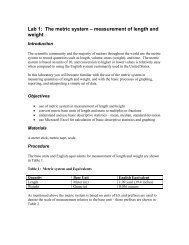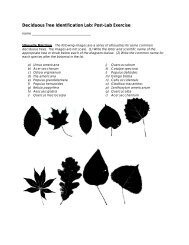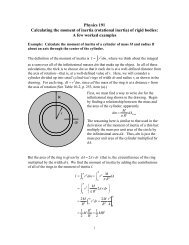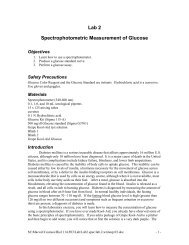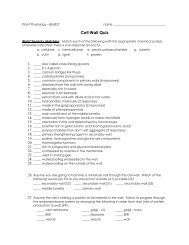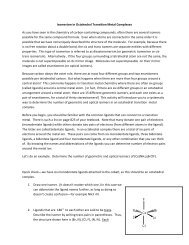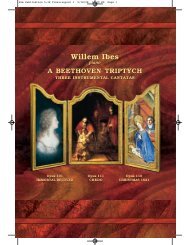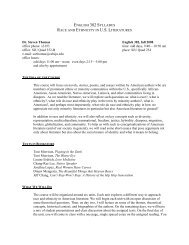Karl Marx Economic and Philosophical Manuscripts of 1844 Wages ...
Karl Marx Economic and Philosophical Manuscripts of 1844 Wages ...
Karl Marx Economic and Philosophical Manuscripts of 1844 Wages ...
Create successful ePaper yourself
Turn your PDF publications into a flip-book with our unique Google optimized e-Paper software.
49product <strong>of</strong> the worker’s activity confront him as something alien ifit were not for the fact that in the act <strong>of</strong> production he wasestranging himself from himself? After all, the product is simplythe resume <strong>of</strong> the activity, <strong>of</strong> the production. So if the product <strong>of</strong>labor is alienation, production itself must be active alienation, thealienation <strong>of</strong> activity, the activity <strong>of</strong> alienation. The estrangement<strong>of</strong> the object <strong>of</strong> labor merely summarizes the estrangement, thealienation in the activity <strong>of</strong> labor itself.What constitutes the alienation <strong>of</strong> labor?Firstly, the fact that labor is external to the worker—i.e., doesnot belong to his essential being; that he, therefore, does notconfirm himself in his work, but denies himself, feels miserable<strong>and</strong> not happy, does not develop free mental <strong>and</strong> physical energy,but mortifies his flesh <strong>and</strong> ruins his mind. Hence, the worker feelshimself only when he is not working; when he is working, he doesnot feel himself. He is at home when he is not working, <strong>and</strong> not athome when he is working. His labor is, therefore, not voluntarybut forced, it is forced labor. It is, therefore, not the satisfaction <strong>of</strong> aneed but a mere means to satisfy needs outside itself. Its aliencharacter is clearly demonstrated by the fact that as soon as nophysical or other compulsion exists, it is shunned like the plague.External labor, labor in which man alienates himself, is a labor <strong>of</strong>self-sacrifice, <strong>of</strong> mortification. Finally, the external character <strong>of</strong>labor for the worker is demonstrated by the fact that it belongs notto him but to another, <strong>and</strong> that in it he belongs not to himself but toanother. Just as in religion the spontaneous activity <strong>of</strong> the humanimagination, the human brain, <strong>and</strong> the human heart, detaches itselffrom the individual <strong>and</strong> reappears as the alien activity <strong>of</strong> a god or<strong>of</strong> a devil, so the activity <strong>of</strong> the worker is not his own spontaneousactivity. It belongs to another, it is a loss <strong>of</strong> his self.The result is that man (the worker) feels that he is acting freelyonly in his animal functions—eating, drinking, <strong>and</strong> procreating, orat most in his dwelling <strong>and</strong> adornment—while in his humanfunctions, he is nothing more than animal.It is true that eating, drinking, <strong>and</strong> procreating, etc., are alsogenuine human functions. However, when abstracted from otheraspects <strong>of</strong> human activity, <strong>and</strong> turned into final <strong>and</strong> exclusiveends, they are animal.We have considered the act <strong>of</strong> estrangement <strong>of</strong> practicalhuman activity, <strong>of</strong> labor, from two aspects: (1) the relationship <strong>of</strong>the worker to the product <strong>of</strong> labor as an alien object that has powerover him. The relationship is, at the same time, the relationship tothe sensuous external world, to natural objects, as an alien worldconfronting him, in hostile opposition. (2) The relationship <strong>of</strong> laborto the act <strong>of</strong> production within labor. This relationship is therelationship <strong>of</strong> the worker to his own activity as something whichis alien <strong>and</strong> does not belong to him, activity as passivity [Leiden],power as impotence, procreation as emasculation, the worker’sown physical <strong>and</strong> mental energy, his personal life—for what is lifebut activity?—as an activity directed against himself, which isindependent <strong>of</strong> him <strong>and</strong> does not belong to him. Selfestrangement,as compared with the estrangement <strong>of</strong> the object[Sache] mentioned above.We now have to derive a third feature <strong>of</strong> estranged labor fromthe two we have already examined.Man is a species-being, not only because he practically <strong>and</strong>theoretically makes the species—both his own <strong>and</strong> those <strong>of</strong> otherthings—his object, but also—<strong>and</strong> this is simply another way <strong>of</strong>saying the same thing—because he looks upon himself as thepresent, living species, because he looks upon himself as auniversal <strong>and</strong> therefore free being.Species-life, both for man <strong>and</strong> for animals, consists physicallyin the fact that man, like animals, lives from inorganic nature; <strong>and</strong>because man is more universal than animals, so too is the area <strong>of</strong>inorganic nature from which he lives more universal. Just asplants, animals, stones, air, light, etc., theoretically form a part <strong>of</strong>human consciousness, partly as objects <strong>of</strong> science <strong>and</strong> partly asobjects <strong>of</strong> art—his spiritual inorganic nature, his spiritual means <strong>of</strong>life, which he must first prepare before he can enjoy <strong>and</strong> digestthem—so, too, in practice they form a part <strong>of</strong> human life <strong>and</strong>human activity. In a physical sense, man lives only from thesenatural products, whether in the form <strong>of</strong> nourishment, heating,clothing, shelter, etc. The universality <strong>of</strong> man manifests itself inpractice in that universality which makes the whole <strong>of</strong> nature hisinorganic body, (1) as a direct means <strong>of</strong> life <strong>and</strong> (2) as the matter,the object, <strong>and</strong> the tool <strong>of</strong> his life activity. Nature is man’sinorganic body—that is to say, nature ins<strong>of</strong>ar as it is not the humanbody. Man lives from nature—i.e., nature is his body—<strong>and</strong> he mustmaintain a continuing dialogue with it is he is not to die. To saythat man’s physical <strong>and</strong> mental life is linked to nature simplymeans that nature is linked to itself, for man is a part <strong>of</strong> nature.50



